We’re crouched down, peering at wildflowers and other native plants, bees buzzing through the air. An eastern newt crawls out of a nearby puddle.
Just a couple years earlier, the scene here would have looked quite different. I’m touring a restoration site in the Cumberland Forest with Chris Garland, central Appalachians project director for The Nature Conservancy.
Become a Member
Make a lasting impact for nature when you join The Nature Conservancy.
This valley we’re exploring has been shaped by contour coal mining. If we look more closely, see past the wildflowers, we can see the rubble left over from mining operations.
The Cumberland Forest project includes two parcels covering 253,000 acres in Kentucky, Tennessee and Virginia. The scope of the work here is impressive and includes active forest management, reforestation, forest carbon storage, community development, outdoor recreation and more.
A key component is restoring mine lands to healthy forest. This isn’t about returning land to some “pristine” past. It’s about creating a resilient future, a forest where native plants and wildlife can thrive.
After the Mining
Here in the Cumberland Forest, the signs of mining are not so glaringly obvious, at least not to someone visiting for the first time. We began our trip at a scenic vista in Tennessee that offered a view of the large swath of the project. And I saw forests stretching to the horizon, what surely has to be one of the finest views in the eastern United States.
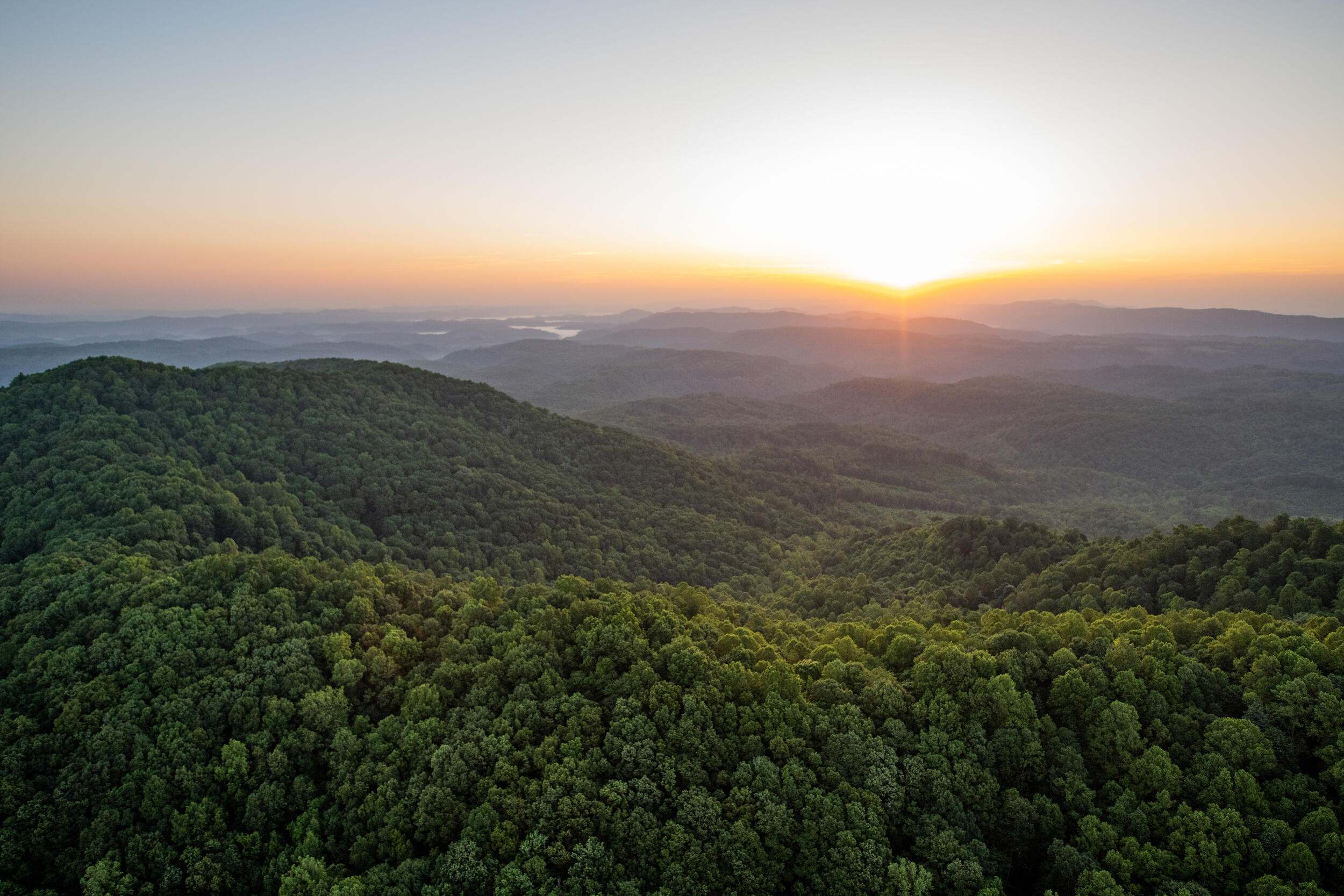
By the time I was born in central Pennsylvania, the anthracite mining boom had largely passed. But the signs of coal mining were impossible to miss. Just a short drive from my home, hills of black coal—some bare, some dotted with scraggly trees—dominated the landscape.
And it looked, well, almost pristine. But driving around with Garland, I saw the landscape through his eyes. That forest? Look closer. It’s actually dominated by autumn olive, an invasive species. This valley? Once a mountain.
When mining companies left, following state and federal guidelines, they often replanted their sites with plants that would mainly reduce erosion. That sounds good in theory, but many of those plants were invasives like autumn olive and sericea lespedeza. Trees that thrived on such sites tended to be adaptable species. These former mine lands offered little habitat to wildlife and little value to carbon storage.
“We wanted to come in and reset the habitat, to give it a chance,” says Garland.
The question is: reset it to what? To forest conditions that existed before mining? To pre-colonial conditions?
Standing on a former mountain, the challenge if not impossibility, of restoring to some historical condition becomes apparent. But it’s perhaps the wrong starting point.
How To Restore Mine Land
Mining activity and specifically some of the older reclamation techniques compacts the soil, making it difficult for water to infiltrate and thus for native plants’ roots to penetrate the soil and to take hold. The invasive species exist in dense patches. And many of these mine lands can only be accessed on unmaintained, rutted, rocky roads.
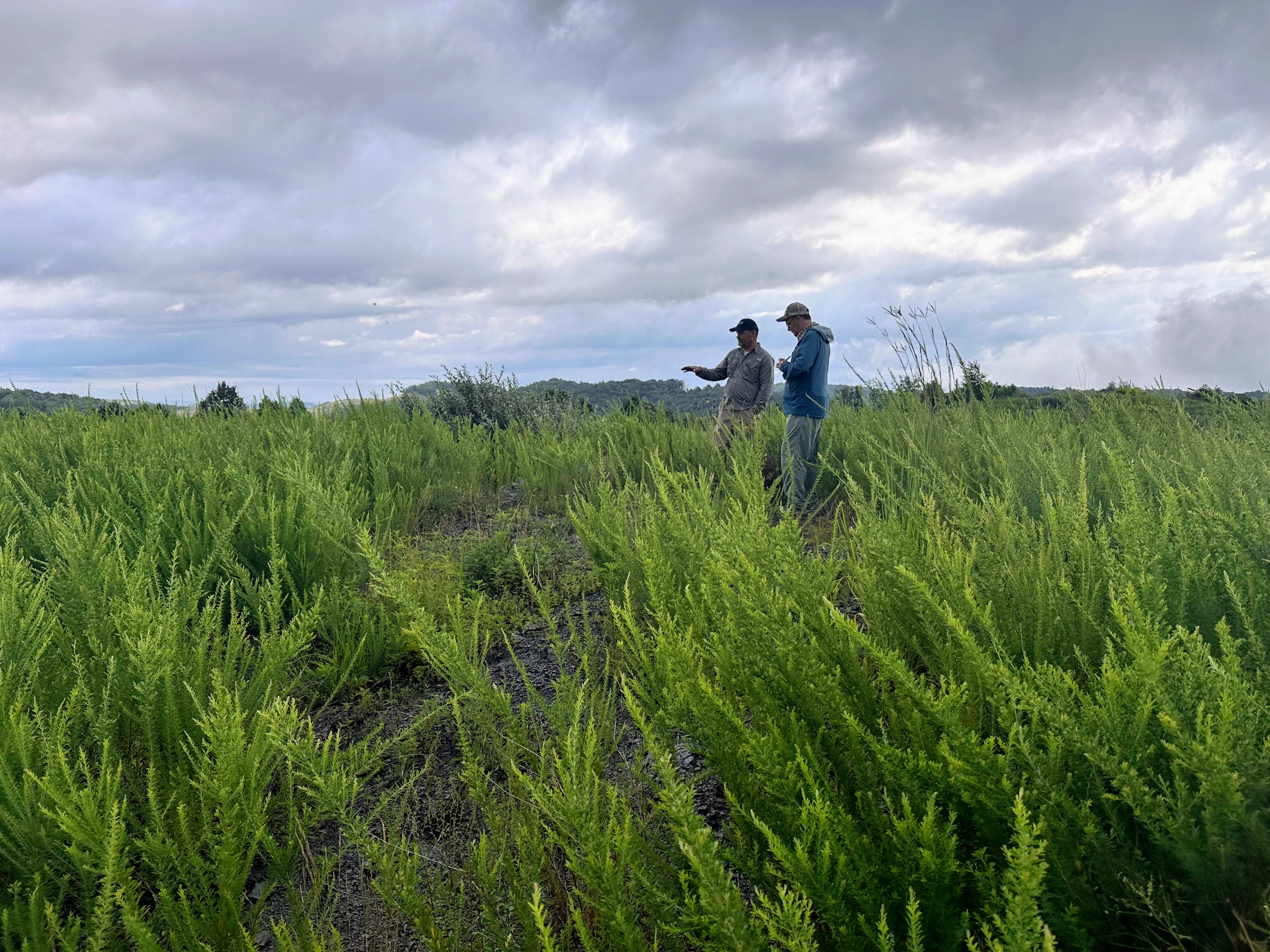
This all adds up to make restoration a herculean task, but one that the latest science can make much more feasible.
The first step is to control the invasives, through mechanical clearing. And then bulldozers rip up the soil. Usually you associate conservation with a gentle touch, but not here.
“The ripping is important,” says Garland. “Ripping lifts big rocks and reduces the compaction. It gives native plants a much better chance of taking hold.”
Next came the planting, accomplished by crews hand planting trees on the site, a diverse mix of trees, grasses and wildflowers. Some native plants, their dormant seeds “freed” from compacted soil, return on their own.
New Signs of Life
The area we are visiting was planted just last year, but already the flowers blooming, butterflies flitting around, a red-eft phase of an eastern salamander resting in a puddle. “It’s amazing the difference a year makes,” Garland says. “After all that disturbance, the native plants reestablish themselves quickly.”
It’s a much more pleasing view than a mound of coal or a tangle of invasive plants, but this isn’t about aesthetics. This newly planted forest benefits wildlife and the community.
“This restored site is much more diverse and better habitat for a much higher number of species,” Garland says.
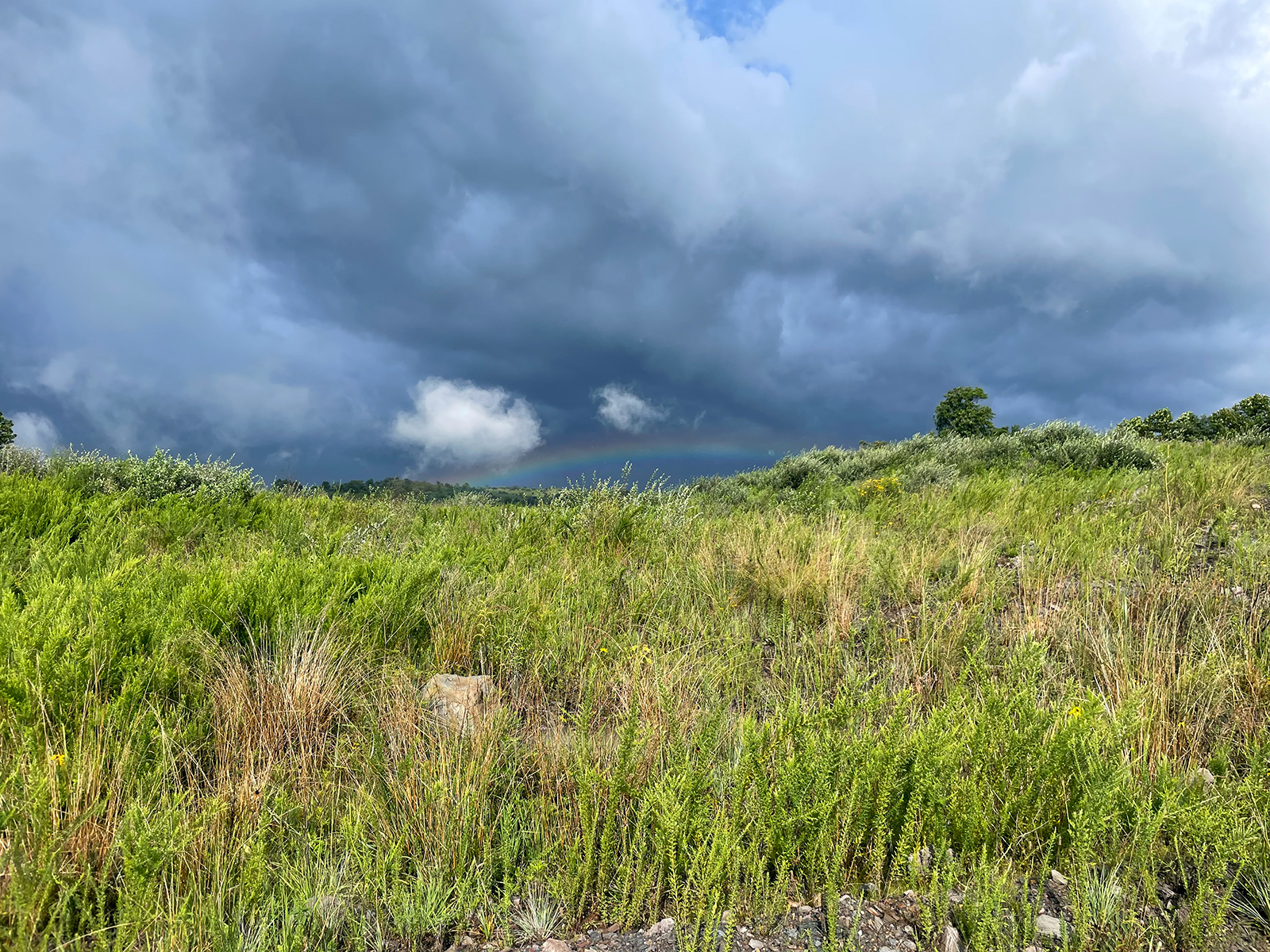
He lists off the wildlife that begins using restored areas almost as soon as they’re established. It benefits popular game species like white-tailed deer, turkey and elk, important in a region where hunting traditions run deep. The forest also benefits species of conservation concern including northern bobwhite and a number of other grassland birds, salamanders and bats.
Garland notes that the ripping also creates little micro-habitats on the landscape, like vernal pools. We visited some of these pools earlier. At a glance, they look like puddles. You can jump across some of them. But microhabitats have an outsized impact on wildlife. We could hear the chorus of frogs as soon as we left our vehicle. Migrating songbirds utilize them for food and cover. Bats hunt over them at night.
Bioacoustic monitoring recorded just how quickly wildlife began using these vernal pools after establishment.
Research by Nature Conservancy scientists and others have found that microhabitats provide significant benefits in helping wildlife adapt to climate change.
Ultimately, restoring the forest here helps tackle climate change on two fronts: by storing millions of tons of carbon dioxide and by connecting a migratory corridor that scientists believe could be one of North America’s most important “escape routes” as plant and animal species shift their range to cooler climates.
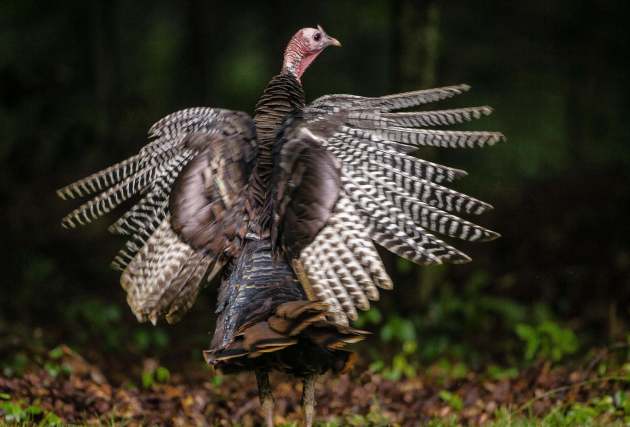
As we move through the forest, turkey heads bobbing ahead of us, it can be easy to forget the legacy of mining. But it’s here, all around us. The restoration is not returning the land, or the forest, to some historical facsimile of what once was. In many ways, it’s more inspiring and important than that.
It’s using our knowledge of historical conditions to help shape a forest with healthy and diverse plant and animal communities, a forest that benefits the community.
“I try to imagine what this area was like before mining, but I really can’t,” says Garland. “You realize you can’t restore it to some historical condition. But we can restore it in a way that benefits the most species for the longest time.”
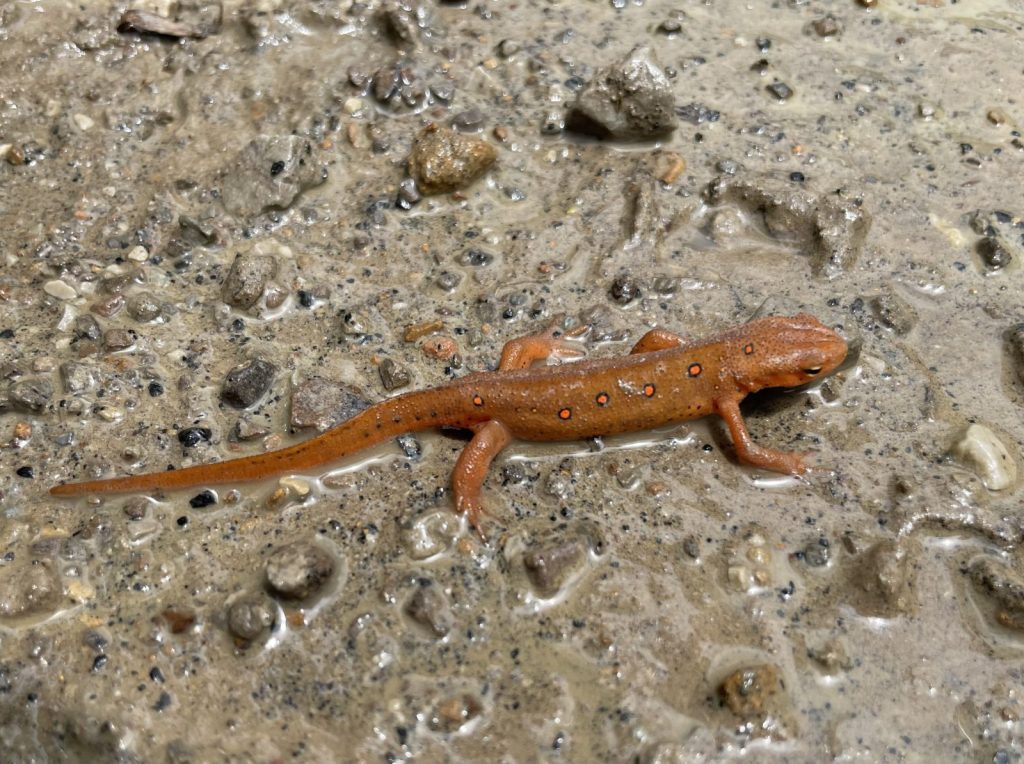



Your article just brought back an old memory.
My only experience with Kentucky coal mining and habitat restoration was in the late 70’s but I do not remember exactly when. I traveled with my grandmother back to her birth place on a farm at Mackey Bend Kentucky near Barbourville.
While there a cousin Jimmy Renfro took me on a tour of the country side to meet more relatives and see current and reclaimed coal mines that his company Fire Ring Fuels from Flatlick Kentucky had operated or were operating. I saw active mines and some mines that were 3 or 4 years after the end of coal production that had the same apparent habitat as the surrounding hills that had not been mined. He also showed me a mine in the process of being “reclaimed” his crew was using a dozer with a large deep ripper to break up the mined sight. He did not plant anything after the deep ripping was done and said that the surrounding vegetation quickly came back onto mined sight and his way was less expensive, faster and more effective.
He said that he had the “feds” after him because he was not following their required reclamation procedures that included planting a grass and brush seed mix in a shallow harrowed seed bed.
The reclaimed mines I saw where this had been done looked like the surrounding habitat and had a variety of “critters” as my cousin called the deer, turkey, fox and opossum we saw. I could still see the mine contour but I would not have known it had been a coal mine if my cousin had not told me. He showed me some other reclaimed mines that used the feds recommended method and they were obviously different and less diverse than the surrounding habitat.
I do not know if Fire Ring Fuels is still in business. I lost contact with my cousin after my Grandmother and her last living sibling died.
Ken,
Thanks for sharing that story. It sounds like your cousin was using similar reclamation techniques. It is a really interesting area and it was good to see the restoration working. I have an upcoming piece on the reintroduction of elk to the region that you might also find interesting. Thanks as always for reading and commenting on Cool Green Science.
Matt
Thanks Matthew for a hopeful vision. We surely need that sort of perspective in these grim political times
If there are any streams or rivers I hope you restore the black willow trees and the eastern cottonwood trees on the shoreline of the streams, rivers and lakes.